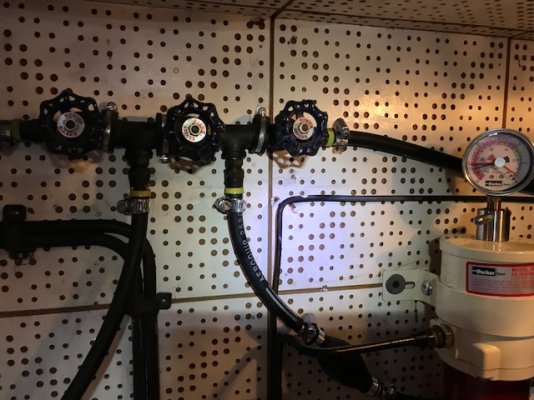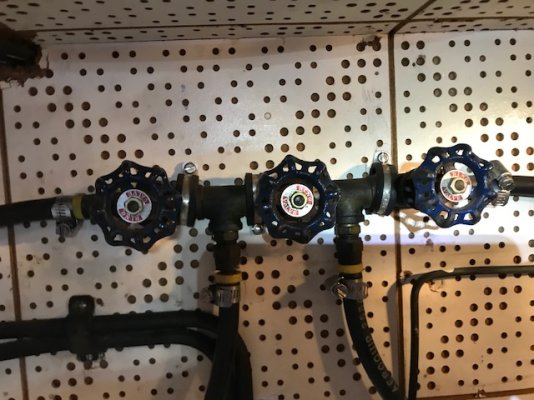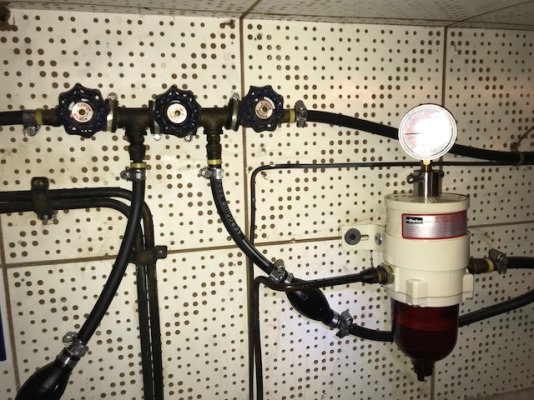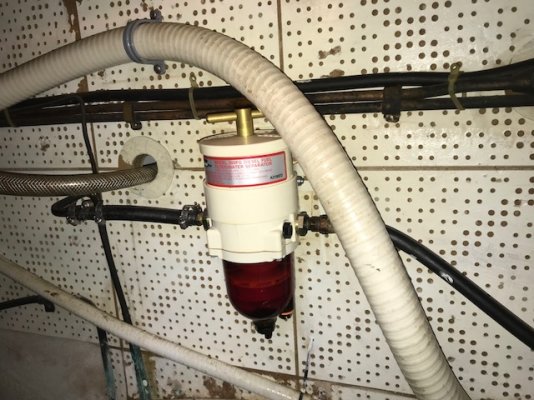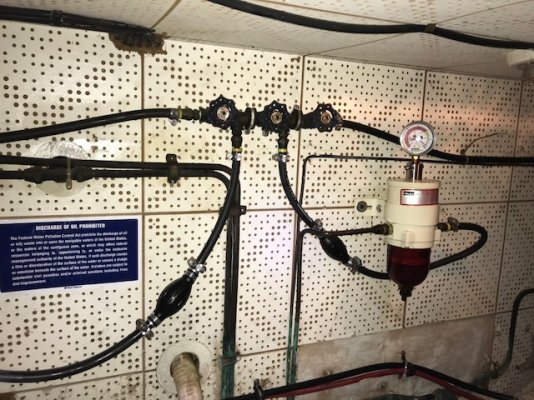I'm wondering if someone can tell me when a Lehman 80 has an air leak or a fuel restriction issue will the air accumulation always appear at the injector pump and last secondary filter in the line?
If someone was to say shut off the valve to the tank, then run the motor for a while (extreme example of fuel restriction) would air end up in the injector pump when the motor starved out?
Another example would be say a racor with a leaking oring letting air into the line, would that air end up accumulating at the injector pump causing shutdown?
I guess my question is if air gets in the line (other then empty tanks) or fuel starvation happens is the air always found in the same place at the injector pump and secondary filter?
If someone was to say shut off the valve to the tank, then run the motor for a while (extreme example of fuel restriction) would air end up in the injector pump when the motor starved out?
Another example would be say a racor with a leaking oring letting air into the line, would that air end up accumulating at the injector pump causing shutdown?
I guess my question is if air gets in the line (other then empty tanks) or fuel starvation happens is the air always found in the same place at the injector pump and secondary filter?

